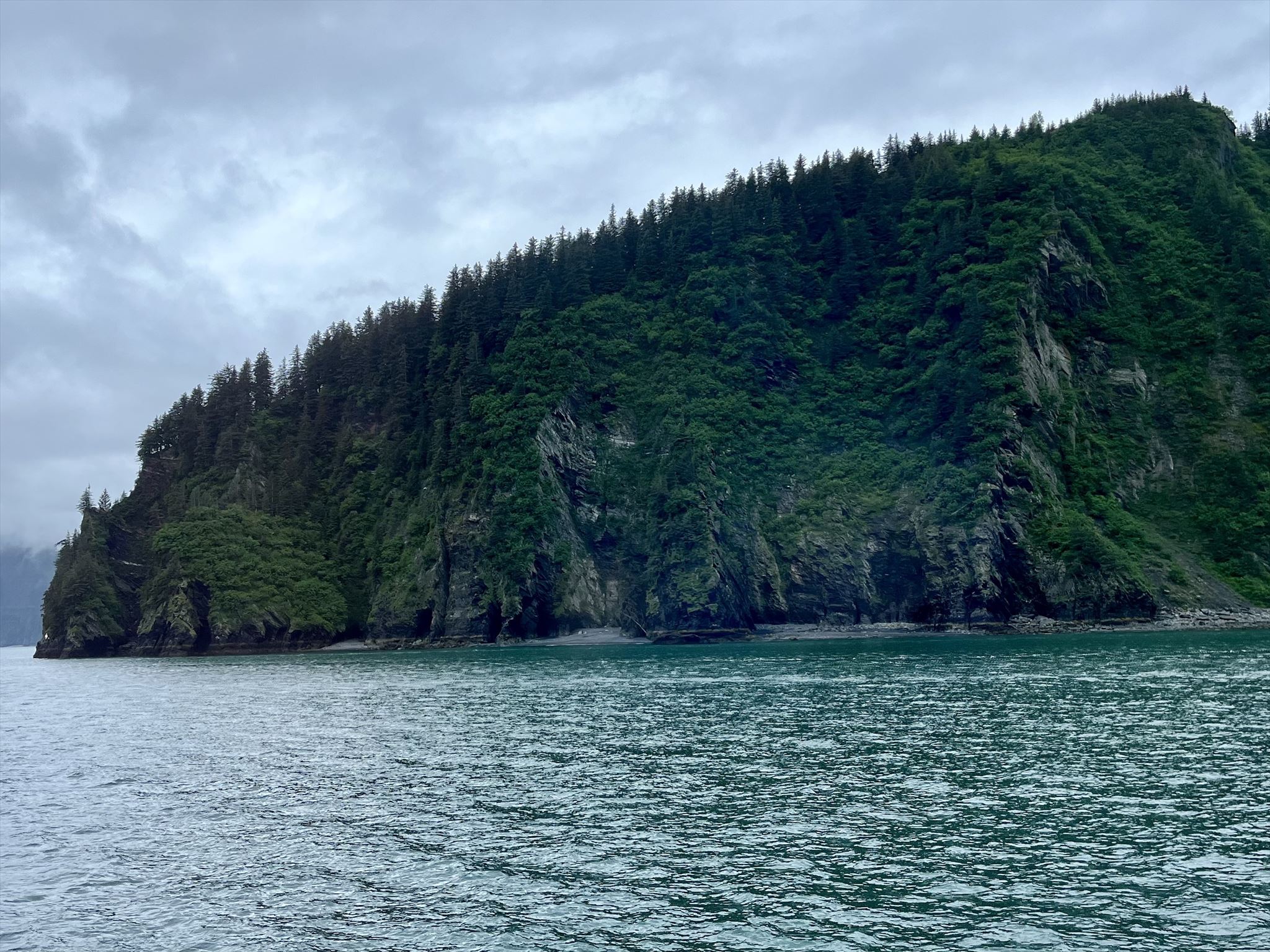
Resurrection Bay is a beautiful inlet on Alaska's Kenai Peninsula. It's known for its stunning views of mountains, cliffs, and blue waters. The bay is a great spot for wildlife watching and outdoor activities like kayaking, fishing, and hiking. It got its name from a Russian fur trader who found safety from a storm there in the 18th century. Today, Resurrection Bay remains a popular destination, offering visitors a chance to experience Alaska's natural beauty and explore the nearby Kenai Fjords National Park.
In Alaska, sea caves are typically formed in areas with coastal cliffs or rocky headlands. The main agents of erosion are the powerful waves generated by tides, storms, and wind. As waves impact the rock face, they exert tremendous pressure, dislodging rock fragments and slowly chiseling away at the rock over time. Zones of weaknesses also play an important role; weaknesses within the rock, such as faults, joints, bedding planes, and fractures, act as pathways for water and ice to penetrate into the rock, contributing to the gradual formation and enlargement of sea caves. Additionally, Alaska's coastal areas experience intense freezing and thawing cycles, especially in the colder months. The freeze-thaw action can further weaken the rock by causing it to expand and contract, leading to the formation of cracks and fractures.
Zones of weaknesses also play an important role, weaknesses within the rock, such as faults, joints, and fractures, act as pathways for water and ice to penetrate into the rock.
Ice also plays a crucial role in the creation of sea caves in Alaska. During the winter, water can seep into cracks and fissures within the rock. When the temperature drops below freezing, the water expands as it turns into ice, exerting immense pressure and widening the existing fractures. Over time, the repeated freezing and thawing cycles contribute to the enlargement and deepening of the sea caves. The type of rock present along the coast also influences sea cave formation in Alaska. Coastal regions with softer and less resistant rock, such as shale or sandstone, are more susceptible to erosion, and sea caves may develop more readily in such environments.

Coastal erosion gives rise to a variety of captivating geological features beyond sea caves. Pillars, also known as sea stacks, form when the roof of a sea cave collapses, leaving behind a towering isolated column of rock in the water. These sea stacks are a testament to the relentless erosion along coastal cliffs. Additionally, sea caves can transform into sea arches or windows when erosion progresses through the headland, creating an opening that spans the width of the rock.
Logging Requirements:
- Describe the coastline along Resurrection Bay. Is it regular, or irregular (i.e. lot of small coves)?
- Describe the sea caves in the area. Why do you think they formed where they are located (hint: look at their orientation)?
- Do you see any other coastal erosional features (such as arches, pillars, stacks, or windows)? How do you think these features will change over time?
- Upload a picture taken near the sea caves in Resurrection Bay. You don't have to be in the photo, though it is strongly encouraged.
Sources:
- https://www.wikiwand.com/en/Resurrection_Bay
- https://www.nps.gov/subjects/caves/sea-or-littoral-caves.htm#:~:text=Sea%20caves%20or%20littoral%20caves,nearly%20every%20type%20of%20rock.
- https://www.alaskacollection.com/lodging/kenai-fjords-wilderness-lodge/stories/heart-shaped-rocks-exploring-fox-island-geology/#:~:text=In%20a%20coastal%20area%20like,are%20interbedded%20sandstone%20and%20shale.